
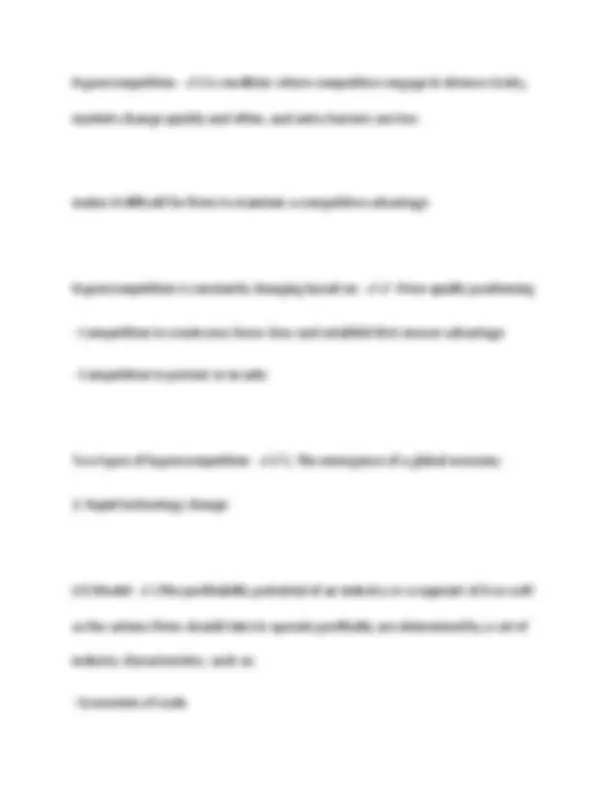
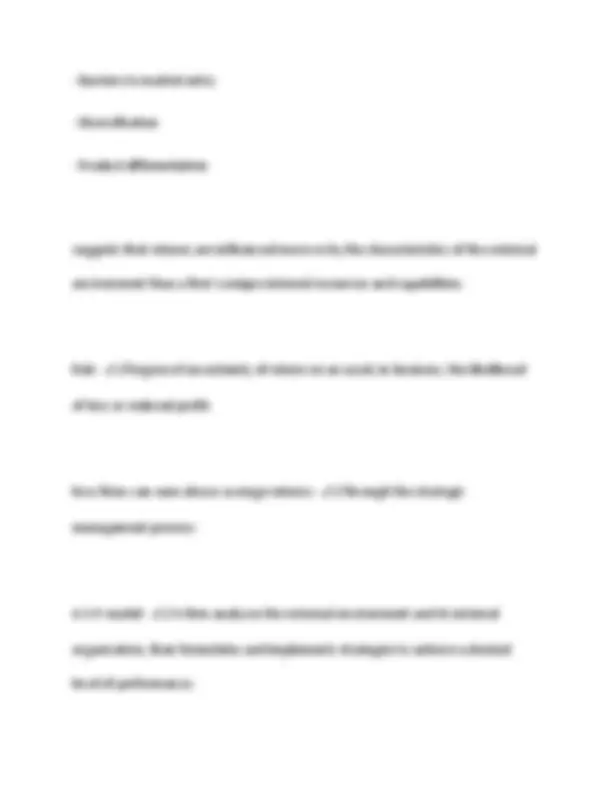
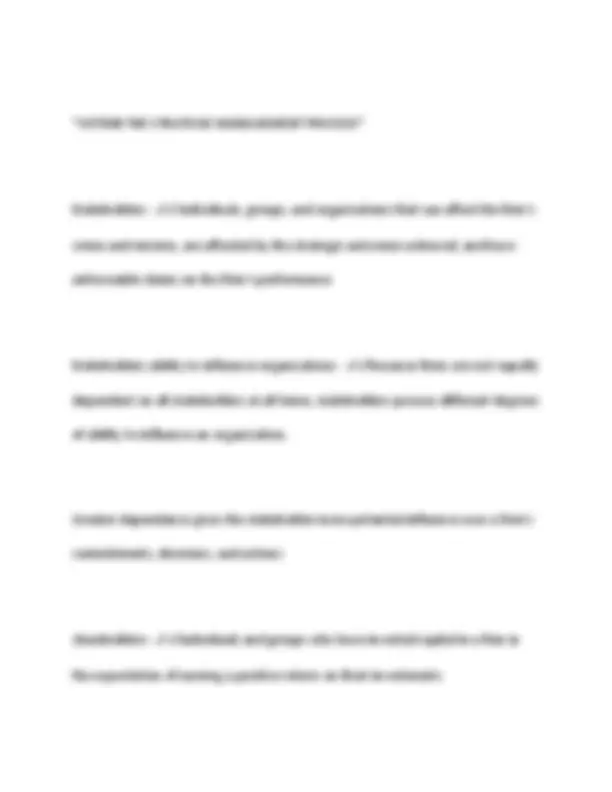
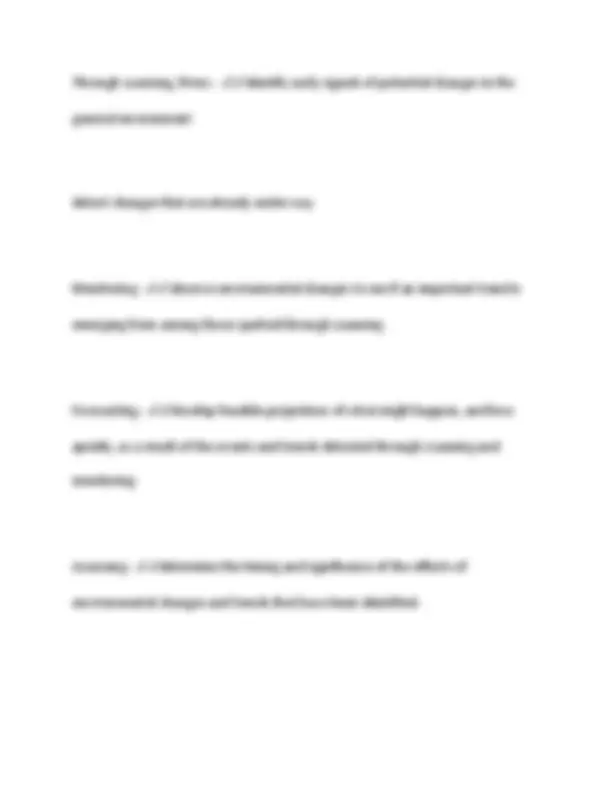
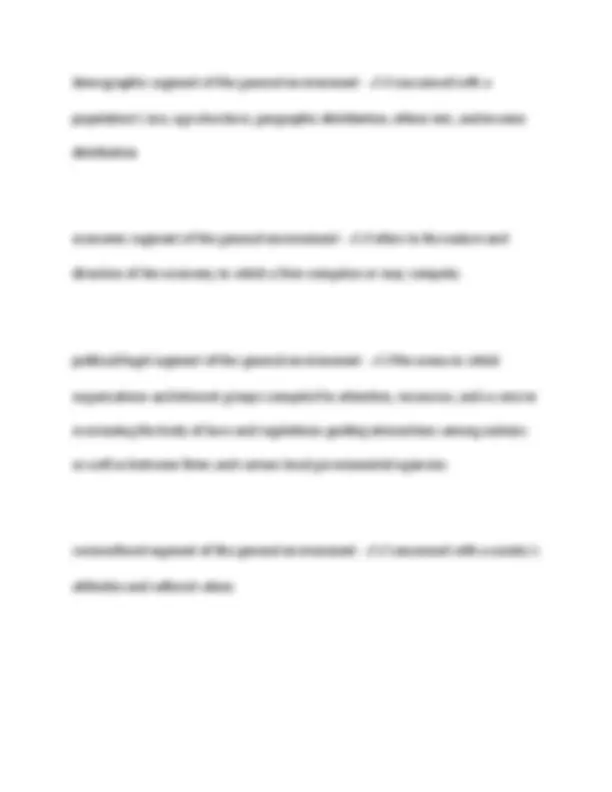
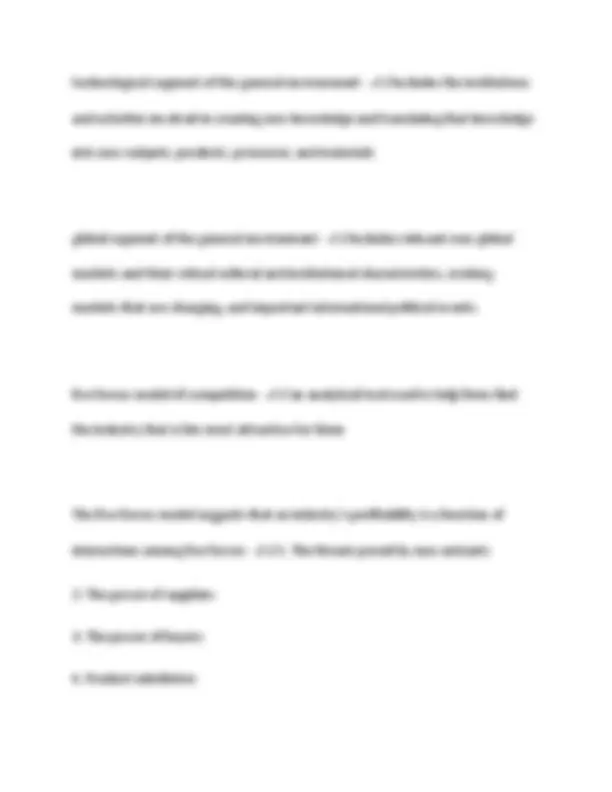
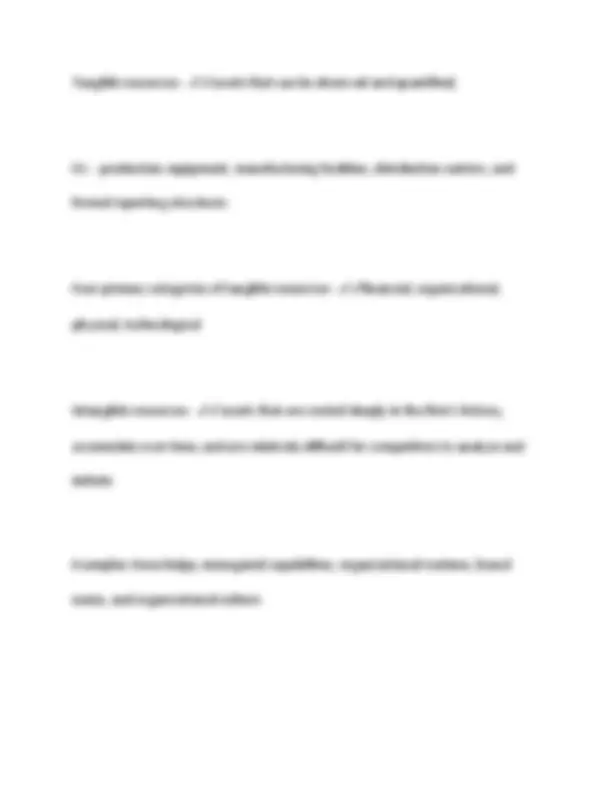
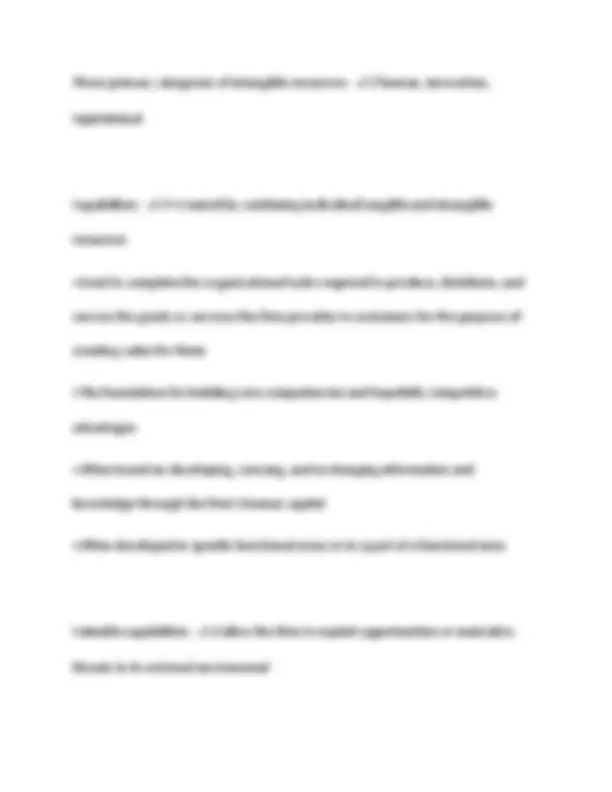


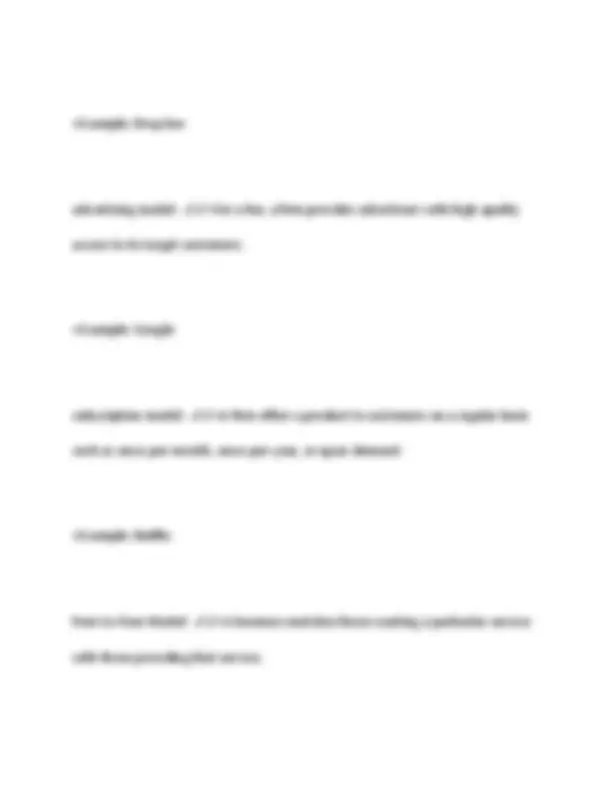


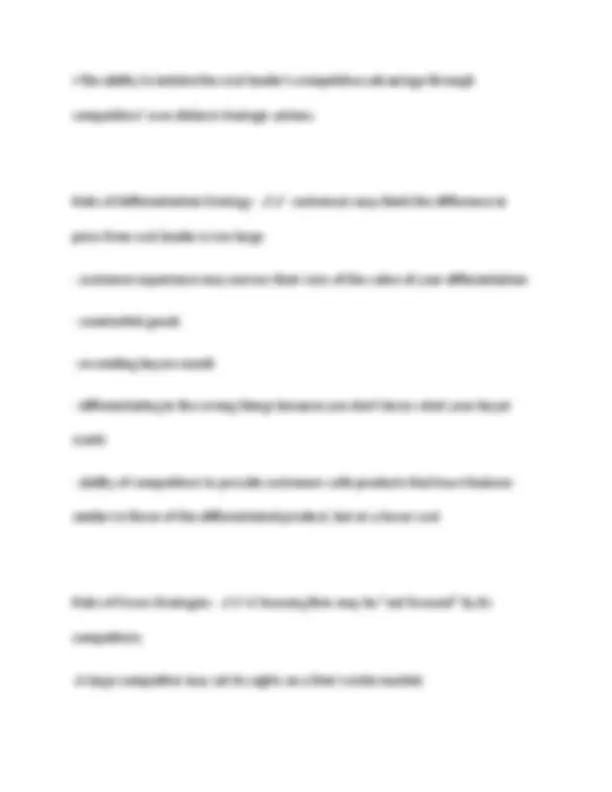
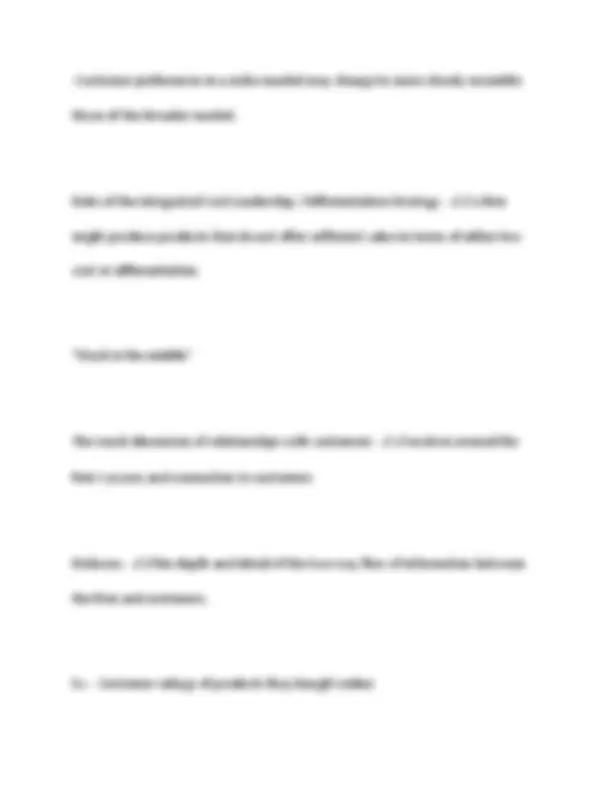



Study with the several resources on Docsity

Earn points by helping other students or get them with a premium plan


Prepare for your exams
Study with the several resources on Docsity

Earn points to download
Earn points by helping other students or get them with a premium plan
Community
Ask the community for help and clear up your study doubts
Discover the best universities in your country according to Docsity users
Free resources
Download our free guides on studying techniques, anxiety management strategies, and thesis advice from Docsity tutors
strategic competitiveness - ✔✔achieved when a firm successfully formulates and implements a value-creating strategy strategy - ✔✔an integrated and coordinated set of commitments and actions designed to exploit core competencies and gain a competitive advantage competitor analysis - ✔✔focuses on each company against which a firm competes directly In a competitor analysis, the firm seeks to understand the following: - ✔✔- What drives the competitor, as shown by its future objectives - What the competitor is doing, as revealed by its current strategy - What the competitor believes about the industry, as shown by its assumptions
Typology: Exams
1 / 24

This page cannot be seen from the preview
Don't miss anything!

















strategic competitiveness - ✔✔achieved when a firm successfully formulates and implements a value-creating strategy strategy - ✔✔an integrated and coordinated set of commitments and actions designed to exploit core competencies and gain a competitive advantage competitor analysis - ✔✔focuses on each company against which a firm competes directly In a competitor analysis, the firm seeks to understand the following: - ✔✔- What drives the competitor, as shown by its future objectives
· Barriers to market entry · Diversification · Product differentiation suggests that returns are influenced more so by the characteristics of the external environment than a firm's unique internal resources and capabilities. Risk - ✔✔Degree of uncertainty of return on an asset; in business, the likelihood of loss or reduced profit. how firms can earn above-average returns - ✔✔through the strategic management process A-S-P model - ✔✔A firm analyzes the external environment and its internal organization, then formulates and implements strategies to achieve a desired level of performance.
Stakeholders - ✔✔individuals, groups, and organizations that can affect the firm's vision and mission, are affected by the strategic outcomes achieved, and have enforceable claims on the firm's performance Stakeholders ability to influence organizations - ✔✔Because firms are not equally dependent on all stakeholders at all times, stakeholders possess different degrees of ability to influence an organization. Greater dependence gives the stakeholder more potential influence over a firm's commitments, decisions, and actions shareholders - ✔✔individuals and groups who have invested capital in a firm in the expectation of earning a positive return on their investments.
global- important political events sustainable physical environment - energy consumption Industry Environment - ✔✔the set of factors that directly influences a firm and its competitive actions and responses: the threat of new entrants, the power of suppliers, the power of buyers, the threat of product substitutes, and the intensity of rivalry among competing firms four parts of an external environmental analysis - ✔✔1. Scanning
Through scanning, firms: - ✔✔identify early signals of potential changes in the general environment detect changes that are already under way Monitoring - ✔✔observe environmental changes to see if an important trend is emerging from among those spotted through scanning Forecasting - ✔✔develop feasible projections of what might happen, and how quickly, as a result of the events and trends detected through scanning and monitoring Assessing - ✔✔determine the timing and significance of the effects of environmental changes and trends that have been identified.
technological segment of the general environment - ✔✔includes the institutions and activities involved in creating new knowledge and translating that knowledge into new outputs, products, processes, and materials global segment of the general environment - ✔✔includes relevant new global markets and their critical cultural and institutional characteristics, existing markets that are changing, and important international political events. five forces model of competition - ✔✔an analytical tool used to help firms find the industry that is the most attractive for them The five forces model suggests that an industry's profitability is a function of interactions among five forces - ✔✔1. The threats posed by new entrants
Tangible resources - ✔✔assets that can be observed and quantified; EX. - production equipment, manufacturing facilities, distribution centers, and formal reporting structures Four primary categories of tangible resources - ✔✔financial, organizational, physical, technological Intangible resources - ✔✔assets that are rooted deeply in the firm's history, accumulate over time, and are relatively difficult for competitors to analyze and imitate Examples: Knowledge, managerial capabilities, organizational routines, brand name, and organizational culture
Three primary categories of intangible resources - ✔✔human, innovation, reputational Capabilities - ✔✔•Created by combining individual tangible and intangible resources •Used to complete the organizational tasks required to produce, distribute, and service the goods or services the firm provides to customers for the purpose of creating value for them •The foundation for building core competencies and hopefully competitive advantages •Often based on developing, carrying, and exchanging information and knowledge through the firm's human capital •Often developed in specific functional areas or in a part of a functional area Valuable capabilities - ✔✔allow the firm to exploit opportunities or neutralize threats in its external environment
management, marketing, finance/accounting, production/operations, research and development, and management information systems activities of a business The existence of core rigidities - ✔✔indicates that the firm is too anchored to its past, a situation that prevents it from continuously developing new capabilities and core competencies. all core competencies have the potential to become - ✔✔core rigidities - former core competencies that now generate inertia and stifle innovation. when selecting a business-level strategy, the firm determines - ✔✔•Who will be served •What needs those target customers have that it will satisfy •How those will needs will be satisfied
The Purpose of a Business-Level Strategy - ✔✔to create differences between the firm's position and those of its competitors To position itself differently from competitors, a firm must decide if it intends - ✔✔perform activities differently or if it will perform different activities business model - ✔✔describes what a firm does to create, deliver, and capture value for its stakeholders Developing and integrating a business model and a business-level strategy - ✔✔increases the likelihood of company success. a business model is a - ✔✔framework for how the firm will use processes to create, deliver, and capture value
•Example: Drop box advertising model - ✔✔•For a fee, a firm provides advertisers with high-quality access to its target customers. •Example: Google subscription model - ✔✔•A firm offers a product to customers on a regular basis such as once-per-month, once-per-year, or upon demand. •Example: Netflix Peer-to-Peer Model - ✔✔•A business matches those wanting a particular service with those providing that service.
•Example: Air b n b Types of Business-Level Strategies - ✔✔1. cost leadership